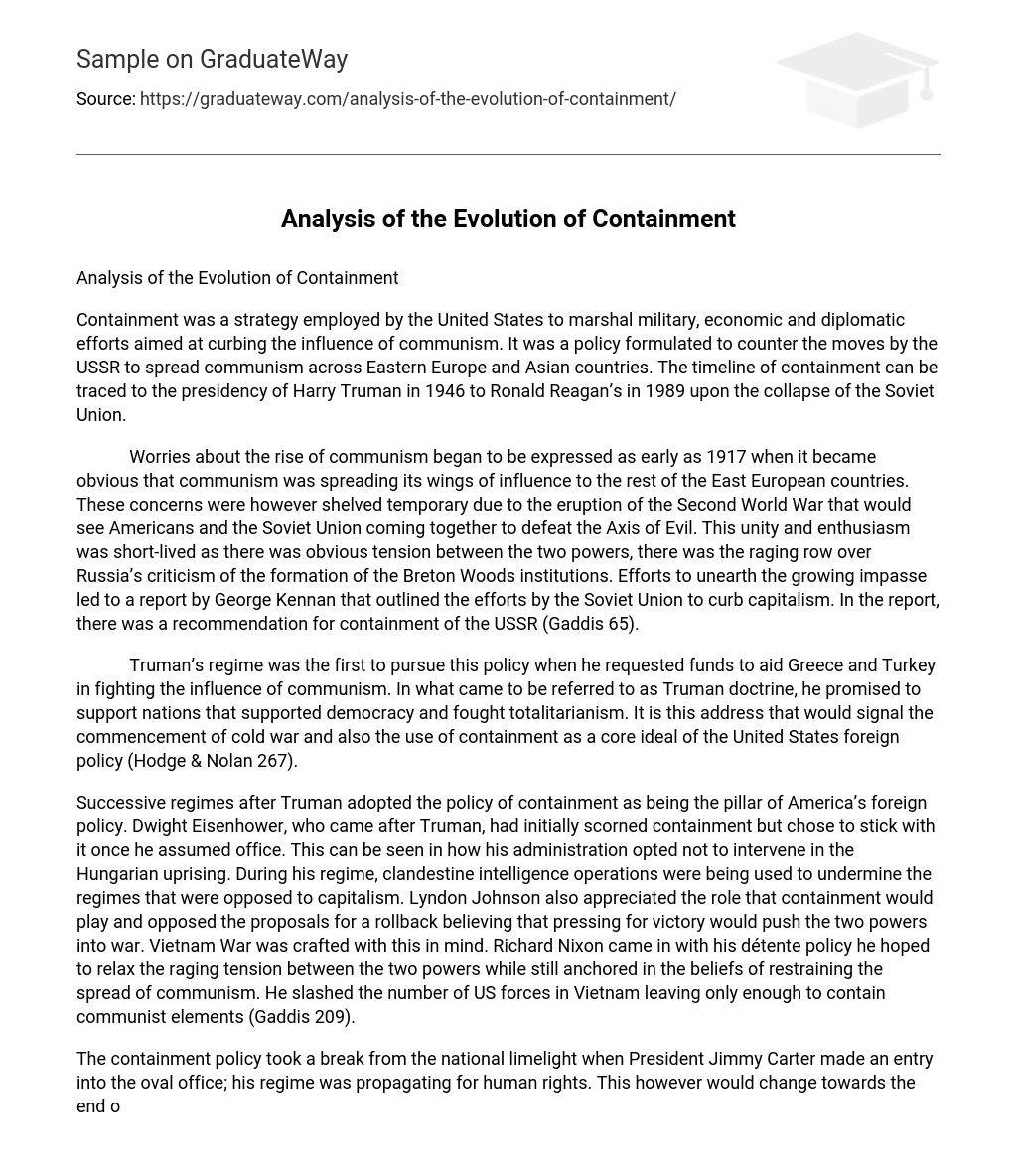Containment was a strategy employed by the United States to marshal military, economic and diplomatic efforts aimed at curbing the influence of communism. It was a policy formulated to counter the moves by the USSR to spread communism across Eastern Europe and Asian countries. The timeline of containment can be traced to the presidency of Harry Truman in 1946 to Ronald Reagan’s in 1989 upon the collapse of the Soviet Union.
Worries about the rise of communism began to be expressed as early as 1917 when it became obvious that communism was spreading its wings of influence to the rest of the East European countries. These concerns were however shelved temporary due to the eruption of the Second World War that would see Americans and the Soviet Union coming together to defeat the Axis of Evil. This unity and enthusiasm was short-lived as there was obvious tension between the two powers, there was the raging row over Russia’s criticism of the formation of the Breton Woods institutions. Efforts to unearth the growing impasse led to a report by George Kennan that outlined the efforts by the Soviet Union to curb capitalism. In the report, there was a recommendation for containment of the USSR (Gaddis 65).
Truman’s regime was the first to pursue this policy when he requested funds to aid Greece and Turkey in fighting the influence of communism. In what came to be referred to as Truman doctrine, he promised to support nations that supported democracy and fought totalitarianism. It is this address that would signal the commencement of cold war and also the use of containment as a core ideal of the United States foreign policy (Hodge & Nolan 267).
Successive regimes after Truman adopted the policy of containment as being the pillar of America’s foreign policy. Dwight Eisenhower, who came after Truman, had initially scorned containment but chose to stick with it once he assumed office. This can be seen in how his administration opted not to intervene in the Hungarian uprising. During his regime, clandestine intelligence operations were being used to undermine the regimes that were opposed to capitalism. Lyndon Johnson also appreciated the role that containment would play and opposed the proposals for a rollback believing that pressing for victory would push the two powers into war. Vietnam War was crafted with this in mind. Richard Nixon came in with his détente policy he hoped to relax the raging tension between the two powers while still anchored in the beliefs of restraining the spread of communism. He slashed the number of US forces in Vietnam leaving only enough to contain communist elements (Gaddis 209).
The containment policy took a break from the national limelight when President Jimmy Carter made an entry into the oval office; his regime was propagating for human rights. This however would change towards the end of his presidency after it became obvious that Soviets were determined to take over the Persian Gulf. The Afghanistan Invasion by Soviets led to the Carter Doctrine that was affirming America’s commitment to containing communism. It is important to observe that the Vietnam War and America’s humiliation in the war was leading to the emergence of criticisms against containment with some analysts hailing détente and peaceful co-existence as the way to go. This was led by the belief that Soviets advancement was unstoppable. The election of Ronald Reagan however changed this; Reagan was disapproving détente and peaceful co-existence policies as the wrong approaches. He brought the doctrine of containment to a whole new level, engaging the Soviets in an expensive arms race and sending troops to areas where communism was making inroads. The soviets could not match the US expensive arms build up (Hoff 131).
Though Reagan’s policies were leaning towards a rollback, the core ideals of containment were upheld; NATO was extensively involved and the administration pursued a policy of nuclear deterrence. The successes of the containment policy can be seen with the eventual collapse and bankruptcy of the Soviet Union without a direct confrontation between the two powers.
Works Cited
Gaddis J. L. Strategies of containment: a critical appraisal of American national security policy during the Cold War. Oxford University Press US, 2005
Hodge C. C. & Nolan C. J. U.S. presidents and foreign policy: from 1789 to the present. ABC-CLIO, 2006
Hoff, Joan. A Faustian foreign policy from Woodrow Wilson to George W. Bush: dreams of perfectibility. Cambridge University Press, 2008





